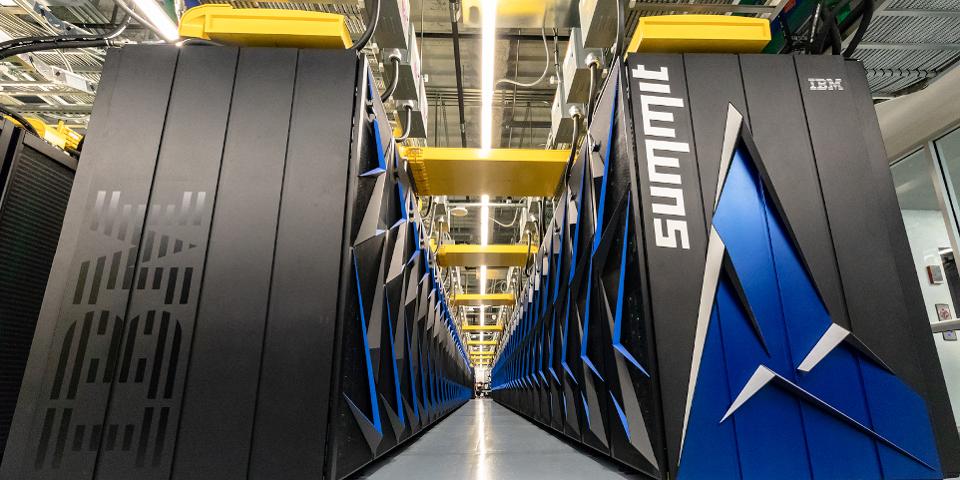Computation Power: Human Brain vs Supercomputer

A supercomputer is a computer with a high level of performance compared to a general-purpose computer. The performance of a supercomputer is commonly measured in floating-point operations per second (FLOPS) instead of million instructions per second (MIPS).
Since 2017, there are supercomputers which can perform up to nearly a hundred quadrillion FLOPS. Since November 2017, all of the world's fastest 500 supercomputers run Linux-based operating systems. Additional research is being conducted in China, the United States, the European Union, Taiwan and Japan to build even faster, more powerful and more technologically superior exascale supercomputers.
Supercomputers play an important role in the field of computational science, and are used for a wide range of computationally intensive tasks in various fields, including quantum mechanics, weather forecasting, climate research, oil and gas exploration, molecular modeling (computing the structures and properties of chemical compounds, biological macromolecules, polymers, and crystals), and physical simulations (such as simulations of the early moments of the universe, airplane and spacecraft aerodynamics, the detonation of nuclear weapons, and nuclear fusion). Throughout their history, they have been essential in the field of cryptanalysis.

At the moment of writing this article the world's fastest supercomputer is Summit or OLCF-4, developed by IBM for use at Oak Ridge National Laboratory, the fastest supercomputer in the world, capable of 200 petaflops.
Each one of its 4,608 nodes (9,216 IBM POWER9 CPUs and 27,648 NVIDIA Tesla GPUs) has over 600 GB of coherent memory (6×16 = 96 GB HBM2 plus 2×8×32 = 512 GB DDR4 SDRAM) which is addressable by all CPUs and GPUs plus 800 GB of non-volatile RAM that can be used as a burst buffer or as extended memory.The POWER9 CPUs and Volta GPUs are connected using NVIDIA's high speed NVLink.
This allows for a heterogeneous computing model. To provide a high rate of data throughput, the nodes will be connected in a non-blocking fat-tree topology using a dual-rail Mellanox EDR InfiniBand interconnect for both storage and inter-process communications traffic which delivers both 200Gb/s bandwidth between nodes and in-network computing acceleration for communications frameworks such as MPI and SHMEM/PGAS.
Brains Are Very Different From Computers
Our miraculous brains operate on the next order higher. Although it is impossible to precisely calculate, it is postulated that the human brain operates at 1 exaFLOP, which is equivalent to a billion billion calculations per second.

When we discuss computers, we are referring to meticulously designed machines that are based on logic, reproducibility, predictability, and math. The human brain, on the other hand, is a tangled, seemingly random mess of neurons that do not behave in a predictable manner.
The brain is both hardware and software, whereas there is an inherent different in computers. The same interconnected areas, linked by billions of neurons and perhaps trillions of glial cells, can perceive, interpret, store, analyze, and redistribute at the same time. Computers, by their very definition and fundamental design, have some parts for processing and others for memory; the brain doesn’t make that separation, which makes it hugely efficient.
The same calculations and processes that might take a computer a few millions steps can be achieved by a few hundred neuron transmissions, requiring far less energy and performing at a far greater efficiency. The amount of energy required to power computations by the world’s fastest supercomputer would be enough to power a building; the human brain achieves the same processing speeds from the same energy as is required to charge a dim light bulb.
One of the things that truly sets brains apart, aside from their clear advantage in raw computing power, is the flexibility that it displays. Essentially, the human brain can rewire itself, a feat more formally known as neuroplasticity. Neurons are able to disconnect and reconnect with others, and even change in their basic features, something that a carefully constructed computer cannot do.
Notes and references





